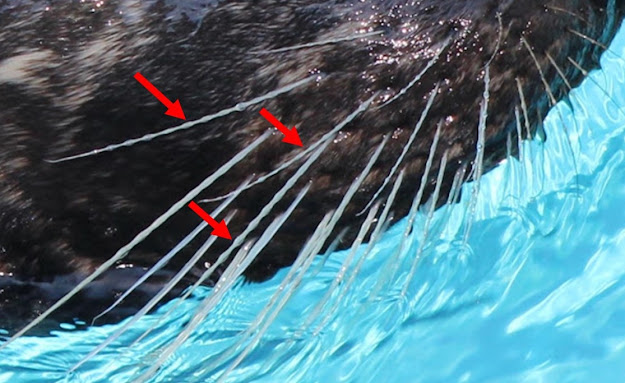Harbor Seal Whisker Update

A few months ago, I published a post about how Harbor Seals use their vibrasse (whiskers) to find delicious and nutritious fibsh . One of the things that I read about Harbor Seal vibrasse was that they are wavy. After looking over photos from a recent trip to the Mystic Aquarium in Mystic, Connecticut, I noticed that in one of the photos you can see the wavyness of their vibrasse: Closeup of a Harbor Seal's wavy vibrasse, with arrows pointing to some of the more noticeable wavy whiskers. Original photo of a Harbor Seal snooter. From my post linked to above, showing different pinniped vibrasse samples. Note that the Harbor Seal vibrasse are wavy. I am not sure exactly why the vibrasse are wavy. I have read that the wavyness may help Harbor Seals find fibsh by reducing unnecessary vibrations while they swim through the water. I have also read that this has not yet been totally proven. Perhaps I should ask Harry the Harbor Seal
